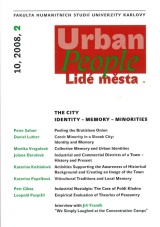Empirical Evaluation of Theories of Peasantry
DOI:
https://doi.org/10.14712/12128112.3716Abstrakt
Like other social sciences, anthropology has theorized about peasantry and its basic concepts in many ways, most of which contradict each other. Shanin viewed them as fitting four major categories. First, the European authors have presented peasantry as an earlier cultural tradition which lags behind modern socio-economic development. For Marx, peasantry meant a class of producers formerly exploited by elite of the pre-capitalist society, which presently represents a leftover from the preceding evolutionary societal stage (1975: 3). Authors of the third category, like Chayanov, regarded peasantry as a special type of mode of production. Finally, DurkHeim and his anthropological followers like Kroeber claimed peasantry to be a structural component of civilization, in Kroeber’s terms, a “part society” (1948: 284).
Stahování
Publikováno
Jak citovat
Číslo
Sekce
Licence

Tato práce je licencována pod Mezinárodní licencí Creative Commons Attribution-NonCommercial-NoDerivatives 4.0.


